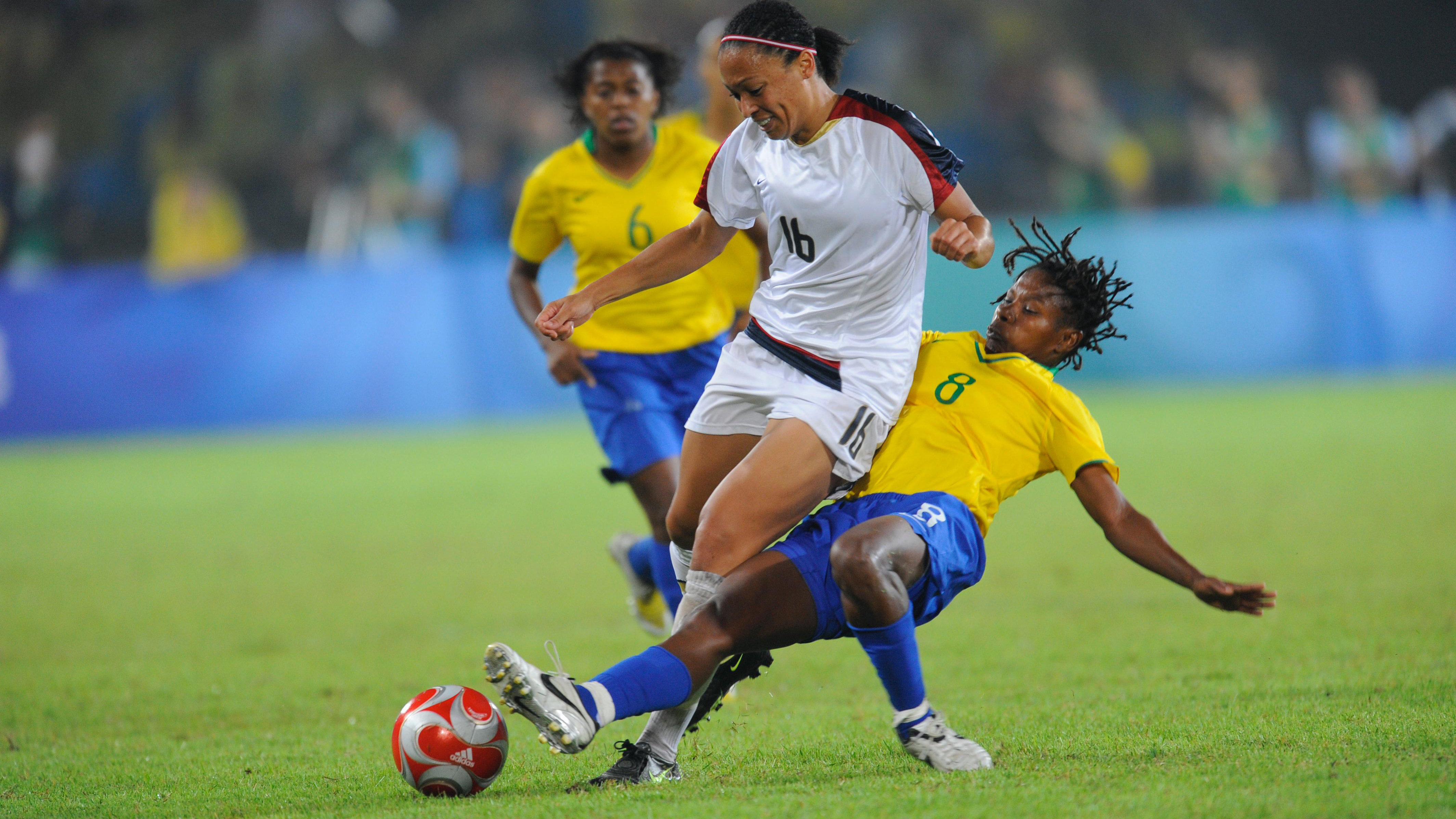Collateral ligament injuries
Injuries to the medial collateral ligament make up about 40% of all serious knee injuries. This makes it the most common knee injury.

There are two strong ligaments on either side of the knee: the medial collateral ligament (MCL) on the inside, and the lateral collateral ligament (LCL) on the outside. They attach to the thigh and the leg and prevent excessive movement.
An injury to the MCL is the more common of the two, and it tends to happen in one of two ways:
- by being struck on the outside of the knee (e.g. in a tackle)
- by falling over with a slightly bent knee, so that the knee is pushed inwards and the lower leg outwards (in a knock-kneed position).
This can lead to a partial or total rupture (tearing) of the MCL.
Injuries to the LCL are far less common but more complicated. They are usually the result of a high-direct force trauma which can lead to a number of other ligaments and tendons to be damaged in addition to the LCL.
These injuries are often caused by an opponent hitting the inside of the knee so that it is forced outwards into a bow-legged position. Or after a direct blow to the front of thee knee, causing it to overextend.
May also injure
Major collateral ligament injuries might also injure the cruciate ligament and meniscus.
Signs and symptoms
A doctor or a physiotherapist will confirm the diagnosis using a clinical examination. Imaging technology is not always necessary. The injured person will have pain on the inside or the outside of the knee, often with localised swelling around the damaged ligament. It can be painful to bend the knee. More severe injuries can lead to the knee feeling unstable, especially with movements where the foot is firmly planted on the ground and the knee moved from side to side.
There is usually less pain associated with a total rupture of a collateral ligament, even though the injury is more severe. In this case, the doctor will use imaging modalities to rule out additional injuries.
Treatment
Immediate treatment using the PRICE principle is important. Painkillers or anti-inflammatory medication can also help during the first few days. Many people benefit from using special braces containing ice water which simultaneously provide compression.
Treatment for more severe MCL injuries requires 4-6 weeks using a knee brace to limit movement and offload the ligament. Surgery is rarely necessary and is only considered when there is a combination of injuries.
Rehabilitation
The focus of rehabilitation is to build up strength, mobility, balance, and knee control. With less severe collateral ligament injuries it usually takes between 6 and 12 weeks. After a total rupture or when there are additional injuries it can take significantly longer. Following rehabilitation, the athlete is usually able to return to sport without any problems.


